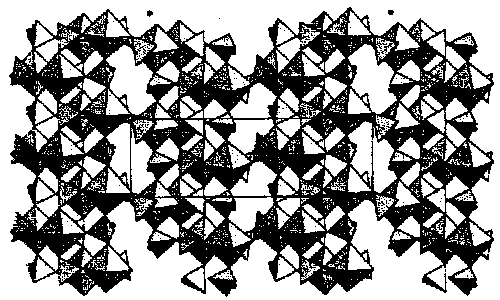
THE SYNTHESIS AND CRYSTAL STRUCTURES OF ALKALINE EARTH METAL INDIUM PHOSPHATES Xuejiao Tang and Abdessadek Lachgar Chemistry Department, Wake Forest University Winston-Salem, NC 27109-7486.
Metal phosphates with open framework structures are well known for their adsorptive, catalytic and ion-exchange properties. Al and Ga phosphates have been widely studied and exhibit great structural variations. In contrast, research of In phosphates has been very limited in scope. As a part of our search for open framework metal phosphates, we have recently been investigating ternary alkali or alkaline earth metal indium phosphates using hydrothermal synthesis techniques.
We report the syntheses and crystal structures of alkaline earth metal indium phosphates A[In2(PO4)2(HPO4)] (A=Ca, Sr or Ba) Ca[In2(PO4)2(HPO4)] was synthesized hydrothermally from stoichiometric amounts of CaO and InCl3 in excess H3PO4 and H2O. The compound crystallizes in monoclinic symmetry, space group P21/n, a=6.5708(6), b=20.237(2), c=6.6572(7)Å, [[beta]]=9l.20(1)deg.. The structure contains In2O10 dimers built up of two edge-sharing (InO6) octahedra. The dimers connect to each other through (PO4 or HPO4) tetrahedra by sharing all of their oxo ligands. Cations are located in tunnels of 8-member ring opening running along [001] direction. To our knowledge, this is the first reported indium phosphate containing In2O10 dimers.
Sr[In2(PO4)2(HPO4)] was obtained hydrothermally from Sr(OH)2 and InCl3 (1:1) in excess H3PO4 and H2O. Space group P21/n, a=6.615(1), b=20.351(3), c=6.752(1)Å, [[beta]]=91.00(1)deg.. Its structure is analogue to Ca[In2(PO4)2(HPO4)]
